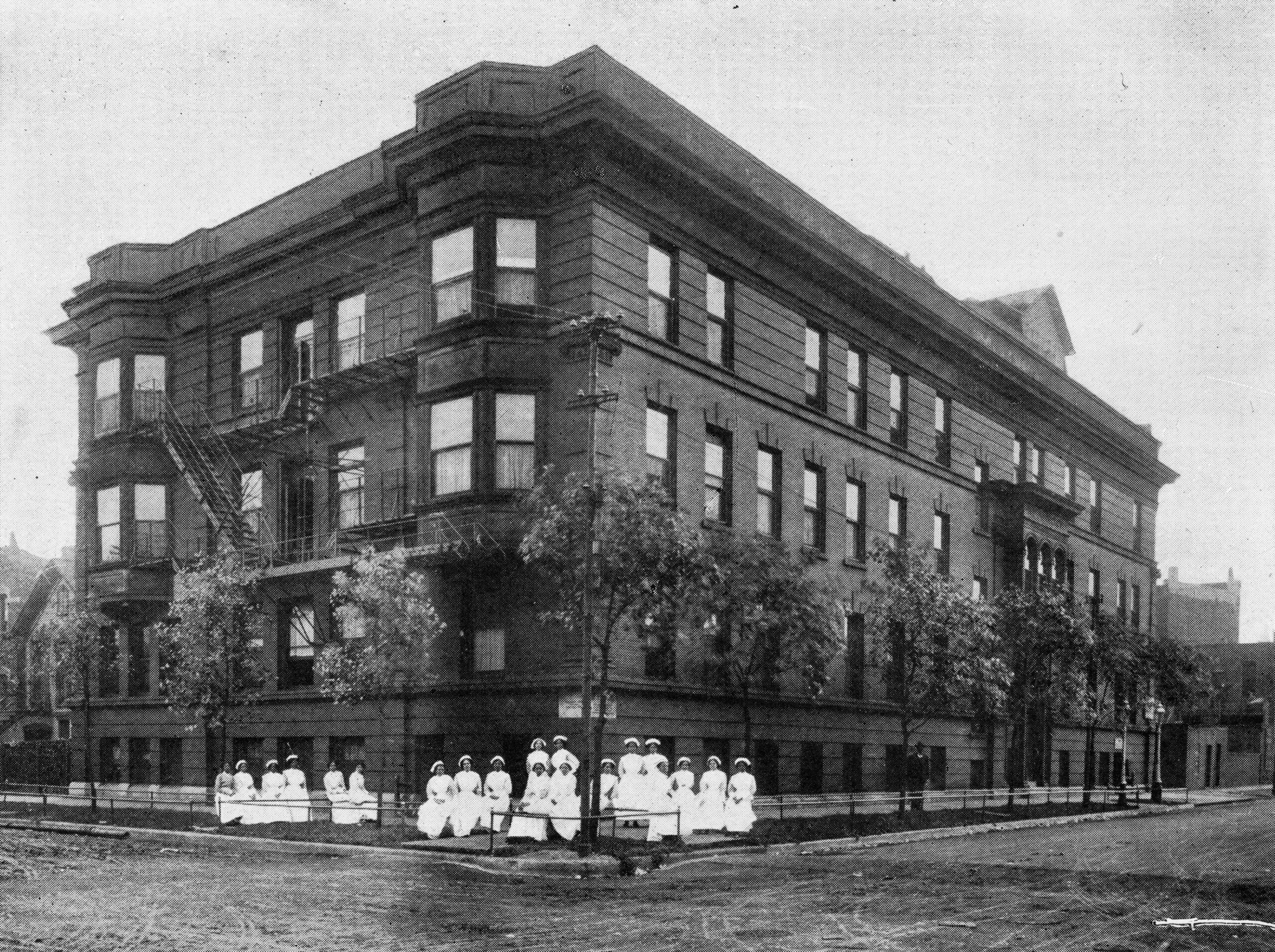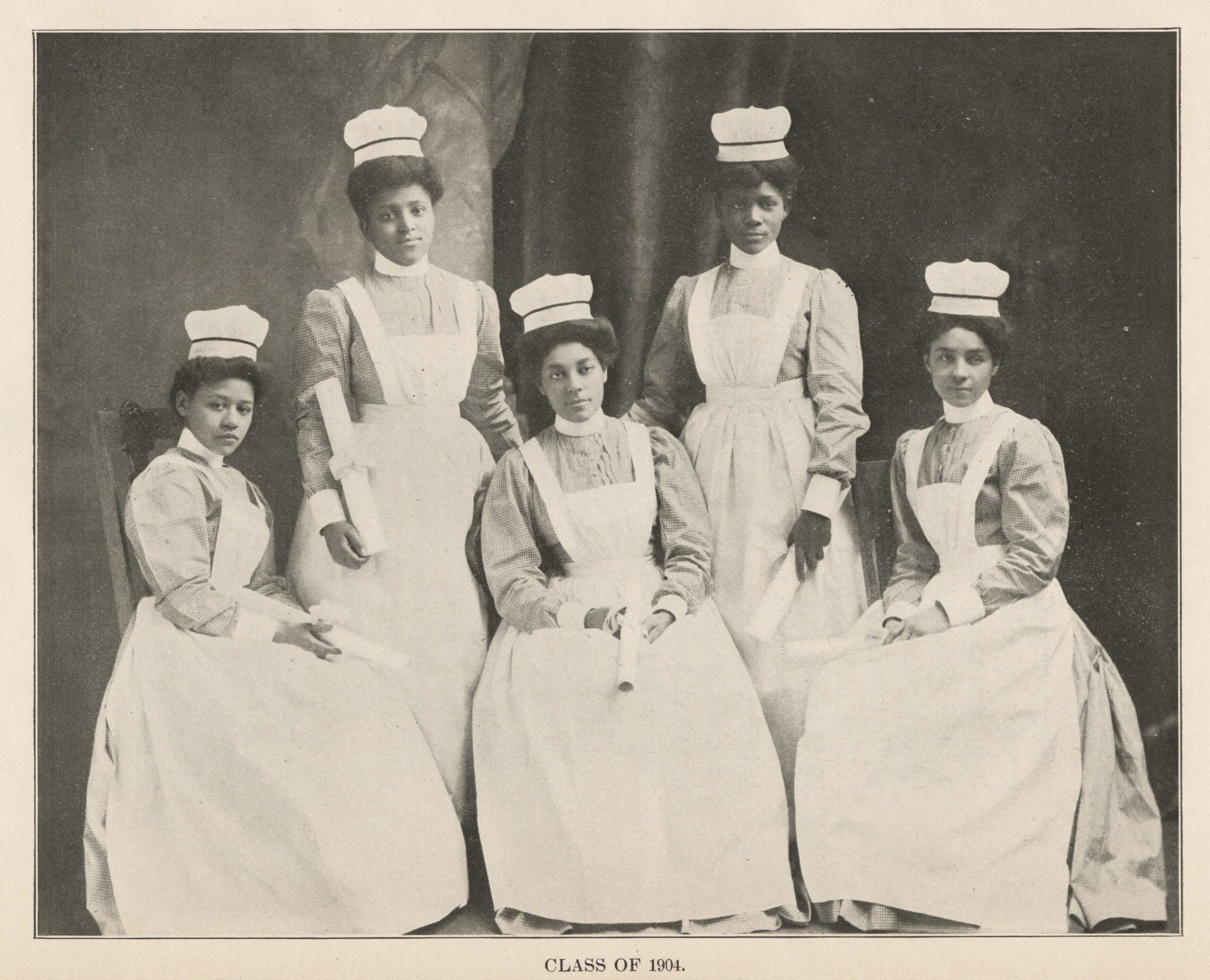CHM assistant curator Brittany Hutchinson recounts how Provident Hospital, the first African American–owned and operated hospital in the US, created opportunities for Black nurses in Chicago. This blog post is part of a series in which we share the stories of local women who made history in anticipation of CHM’s upcoming online exhibition Democracy Limited: Chicago Women and the Vote.
African American women have served as nurses and caretakers since the United States’ period of enslavement, work that can be viewed as another form of labor that befell African American women. The relationship between Black women and nursing work continued throughout history, without the nurses receiving professional recognition or adequate compensation, and their work was an integral and unsung part of many notable historical events—particularly in the early twentieth century.
In the late nineteenth century, Black women who wished to receive formal training were often denied the opportunity to do so solely because of their race. Hospitals in the South directly and explicitly banned Black women from entering their training programs, while very few northern hospitals granted admission—and did so only in rare cases.
In 1889, after Reverend Louis Reynolds’s sister Emma expressed her frustration with Chicago-area hospitals refusing to admit her to their nursing programs due to her race, he enlisted the help of his friend Dr. Daniel Hale Williams to use his connections to find a suitable program for her. Dr. Williams first met with other Black doctors to convince an existing program to admit Emma. Despite being on staff at many of the area hospitals, Black doctors had very little influence within these organizations. It was then determined that establishing a new nursing program for African Americans was the best course of action, as it would create educational opportunities for Black women and also attempt to shield them from hostile, white supremacist learning environments. Dr. Williams founded Provident Hospital in 1891 and a few years later, Emma Reynolds and three other women became the nursing program’s first graduating class.

An undated photograph of nurses in front of Provident Hospital at its second location at 36th and Dearborn Streets, Chicago. CHM, ICHi-040212
As the field of nursing became professionalized, organizations such as the American Nursing Association offered professional opportunities and other advancements to their members. As a requirement of acceptance into the ANA, nurses had to first join a state-level organization. This proved to be impossible in many cases for Black nurses, as most state-level organizations did not accept African Americans for membership. In a similar fashion to the Black women’s club movement brought about during the fight for suffrage, Black nurses like Carrie E. Bullock, a suffragist in her own right, helped create and lead state and national professional organizations dedicated to serving the needs of Black nurses, who were caught in the crosshairs of white supremacy and patriarchy.

Nurses from Provident Hospital’s class of 1904, from the 14th Annual Report of Provident Hospital and Training School, 1905. CHM, ICHi-030235
The suffrage movement carried on as the US entered World War I, and Black nurses who were involved in fighting for the Nineteenth Amendment were eager to join the war effort. However, they were again denied the ability to serve due to their race as the American Red Cross, Army Nurse Corps, and Navy Nurse Corps banned the service of Black women.
In the spring and fall of 1918, an outbreak of a deadly strain of influenza caused a drastic shortage of nurses, which forced the military and Red Cross to change their policies on accepting Black nurses. In December 1918, eighteen nurses were admitted to Army bases at Camp Grant and Camp Sherman in Rockford, Illinois, and Chillicothe, Ohio, respectively. Prior to this integration, Black nurses worked alongside doctors and community leaders to educate Black Chicagoans on how to best prevent becoming infected with influenza. The efforts were not limited to medical advice, as Black medical professionals lobbied city officials to increase sanitation efforts and improve infrastructure in Black neighborhoods, which often did not receive adequate access to city services.
The summer of 1919, often referred to as the Red Summer, brought about a wave of violence against Black people in numerous cities across the US. The violence in Chicago spread across the city’s “Black Belt,” leaving nearly forty people dead, several hundred injured, and more than one thousand without shelter. The most heavily affected were African Americans. The violence was more than a period of civil unrest—the effects it had on the community were identical to that of a public health crisis, as the Chicago Tribune noted, “injured patients all but overwhelmed 10 physicians, three interns and 15 nurses at the South Side’s Provident Hospital.”
The years 1918–19 proved to be a pivotal point in US history, as the suffrage movement, World War I, the influenza pandemic, and the Red Summer of 1919 shook the country to its core. While the effects of these events were felt across the country and in some cases the world, the direct experiences of Black nurses in Chicago are uniquely situated in the absolute center of this intersection in American history.
Join the Discussion